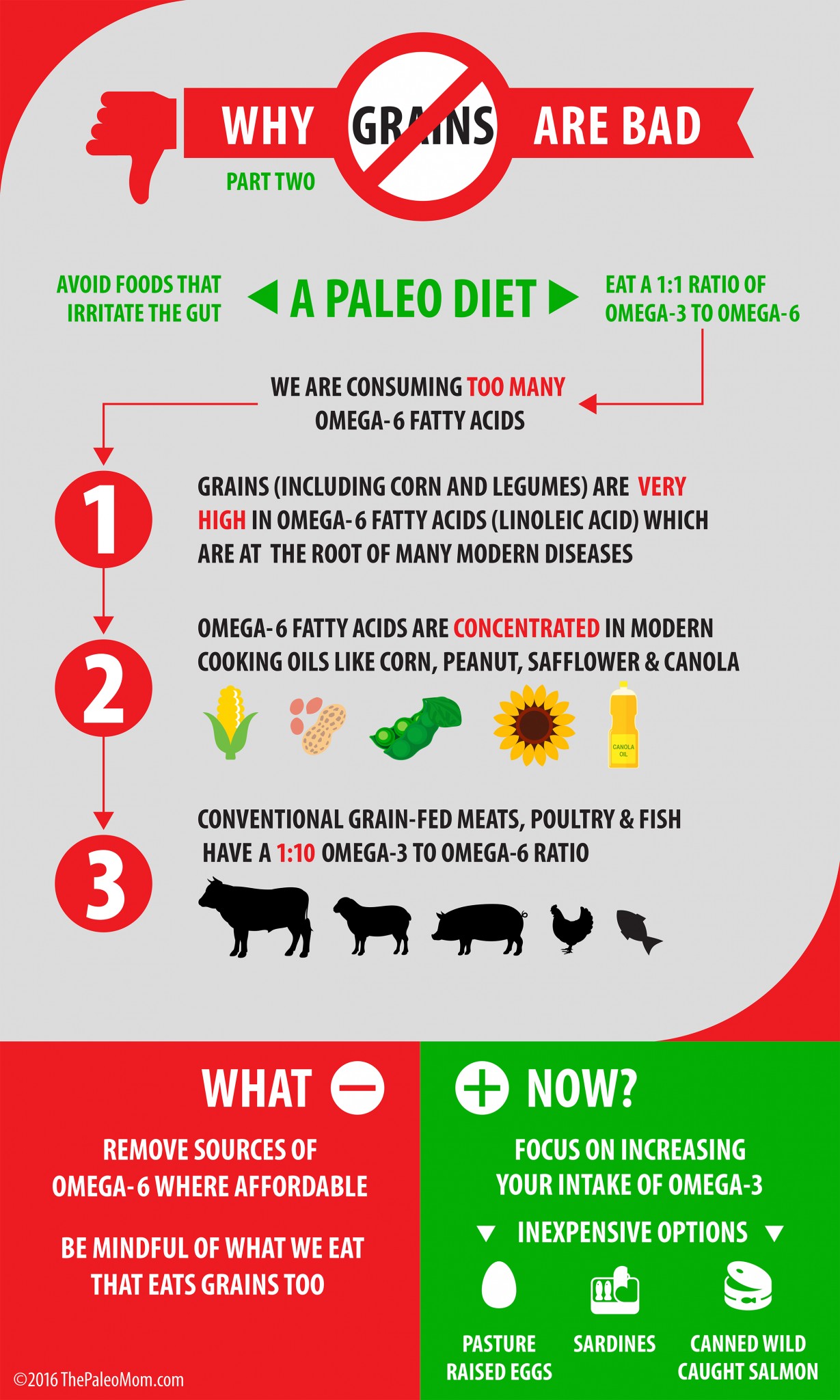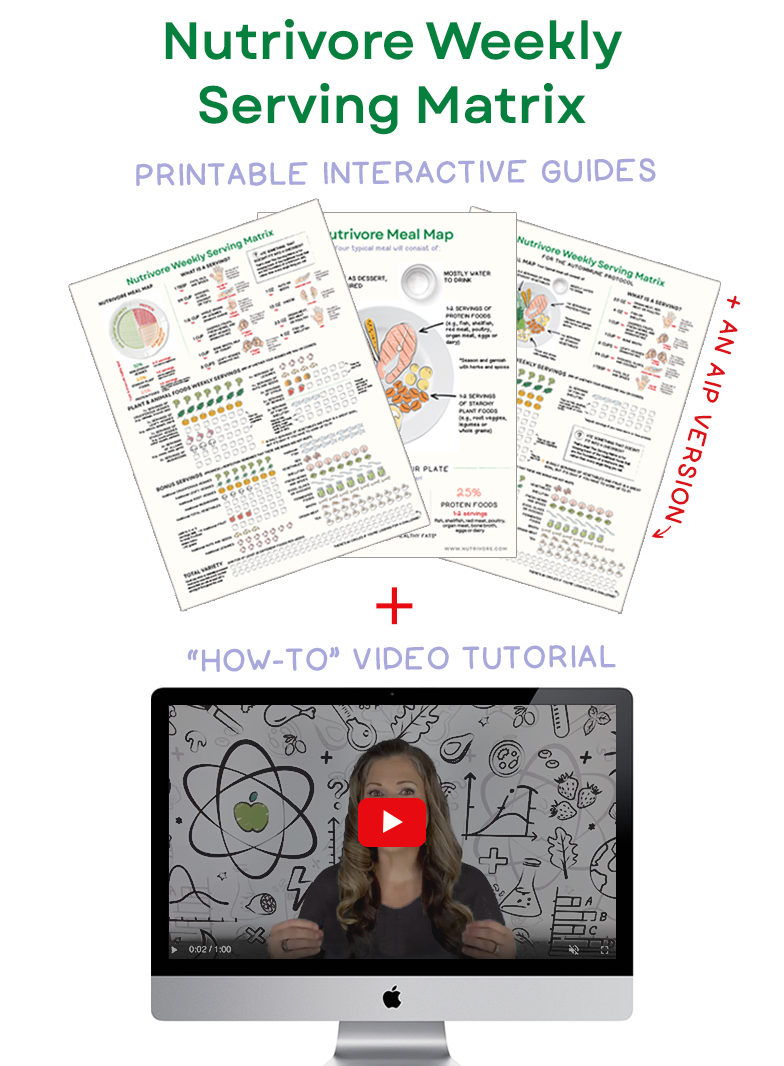Dr. Ballantyne no longer supports this article. Please see her up-to-date information here.
Two important facets of the Paleo diet are to avoid foods that irritate our gut and to eat a balanced ratio of omega-3 to omega-6 fatty acids (aiming for 1:1 to 1:2). We’ve already looked at how lectins in grains can affect our gut health in Why Grains Are Bad–Part 1,Lectins and the Gut, so now, let’s take a look at how they can skew this very important ratio of fatty acids!
Not only do grains contain “toxic” lectins (like gluten) that damage the cells that line our gut, but they are also very high in omega-6 fatty acids. Grains (including corn) and legumes are high in linoleic acid, the omega-6 fatty acid that seems to be at the root of many modern diseases. Omega-6 fatty acids contribute to pro-inflammatory pathways in our body, and the huge increase in the proportion of our dietary fat that now comes from omega-6s (instead of omega-3s) is a major player in a wide range of health problems (see What About Fat?).
But it gets worse! These omega-6 fatty acids are concentrated in modern vegetable oils, which we’ve been encouraged to consume in place of natural animal fats (due to fears surrounding saturated fat and cholesterol). Oils derived from grains and legumes (soy, canola, safflower, sunflower, peanut, corn, etc.) didn’t exist until the process of mechanical extraction was invented. So, not only are we consuming omega-6 fatty acids directly from grain-containing foods, but also from the vegetable oils that they are cooked in.
Another insidious way that omega-6-rich grains have negatively impacted human health is with farmed meat. Cows, pigs, sheep, chickens, and even some farmed fish are fed grains (instead of their more diverse, biologically appropriate diets). The meat from these animals no longer contains a balanced 1:1 ratio of omega-3 to omega-6 fatty acids (which they did prior to agriculture). Instead, it is typically closer to 1:10! It’s not enough just to avoid grains in our diet; we need to be mindful of what we eat that eats grains too. In a perfect world, we would all eat pasture-fed beef, free-range poultry, wild-caught fish, and wild game meat, while also avoiding all grains, legumes, and modern vegetable oils.
When budget becomes an important consideration, I suggest removing sources of omega-6 where affordable, but also focusing more on increasing intake of omega-3 fatty acids. One inexpensive way to do this is by eating omega-3 eggs or pasture-raised eggs (which typically have a 1:1.5 omega-3 to omega-6 ratio). Another way to increase omega-3 intake diet is to eat more wild-caught fish (canned salmon and sardines are a great inexpensive option). (For more budget tips, see Budget Paleo: Priorities and Strategies,Maintaining Your Grocery Budget, “If I Can’t Always Afford Grass-Fed Beef, What Should I Buy?”, and Paleo FAQ: “Can I still do Paleo if I can’t afford or source grass-fed beef and organic produce?”).
Regardless of how we increase our omega-3 consumption, omitting grains from our diet is critical. There are no mammals in the wild that have grains as part of their diet. The only group of animals that do well eating grains is birds, which we are not!

Nutrivore Weekly Serving Matrix
An easy-to-use and flexible weekly checklist
to help you maximize nutrient-density.
The Weekly Serving Matrix is very helpful! I’ve been eating along these lines but this really helps me know where to focus vs. which foods serve a more secondary role. It’s super helpful and has taken a lot of worry out of my meal planning. Thanks!
Jan










